How to Connect Your Shopify Store to ActiveCampaign?

Connecting your Shopify store to ActiveCampaign(an email marketing automation tool) can change how you handle customer relations and make your marketing more efficient. This combination makes it easy to improve the customer experience and grow your business, no matter how long you’ve been selling merchandise online or how new you are.
We’ll show you how to easily link Shopify and ActiveCampaign in this guide. We’ll also explain the main benefits of this integration, like how it can be used to automate email campaigns, sync customer data, and more. By the end, you’ll understand how to leverage this powerful combination to maximize your store’s potential and deliver a new experience to your customers.
Top 5 Reasons You Should Integrate Shopify with ActiveCampaign
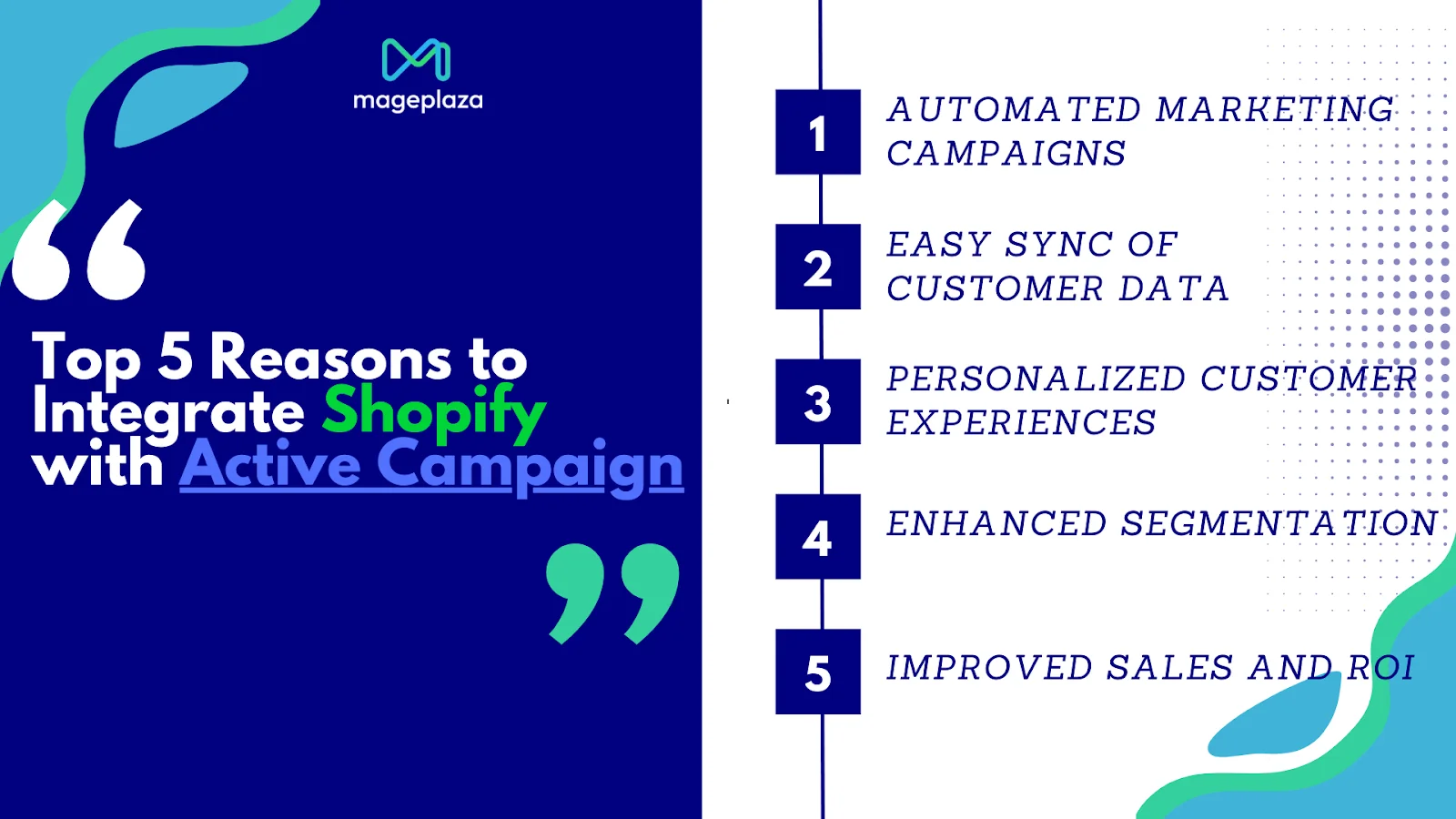
Integrating Shopify with ActiveCampaign offers a powerful way to enhance your e-commerce business. Here’s a deeper dive into the top five reasons why this integration is essential:
1. Automated Marketing Campaigns
You can automate your marketing campaigns with Shopify and ActiveCampaign integration to save time and boost productivity. For example, when a customer signs up for your newsletter or makes a purchase, ActiveCampaign can automatically send them a series of tailored emails.
These could be anything from a welcome message to suggestions for products based on how they’ve bought things before. Automation gets rid of the need to handle emails by hand, so you can focus on other important parts of your business while your marketing goes smoothly in the background.
2. Easy Sync of Customer Data
When you connect your Shopify with ActiveCampaign, your customer data, including purchase history, and site interactions, syncs automatically between the platforms. This data synchronization means that you always have the most up-to-date information at your fingertips, enabling you to create campaigns that speak directly to your customers’ needs.
The integration allows for a more dynamic and responsive approach to marketing, where you can quickly adapt to changes in customer behavior without manual data entry.
3. Personalized Customer Experiences
ActiveCampaign’s integration with Shopify enables you to design and automate personalized customer journeys that guide your shoppers from their first visit to a completed purchase and beyond.
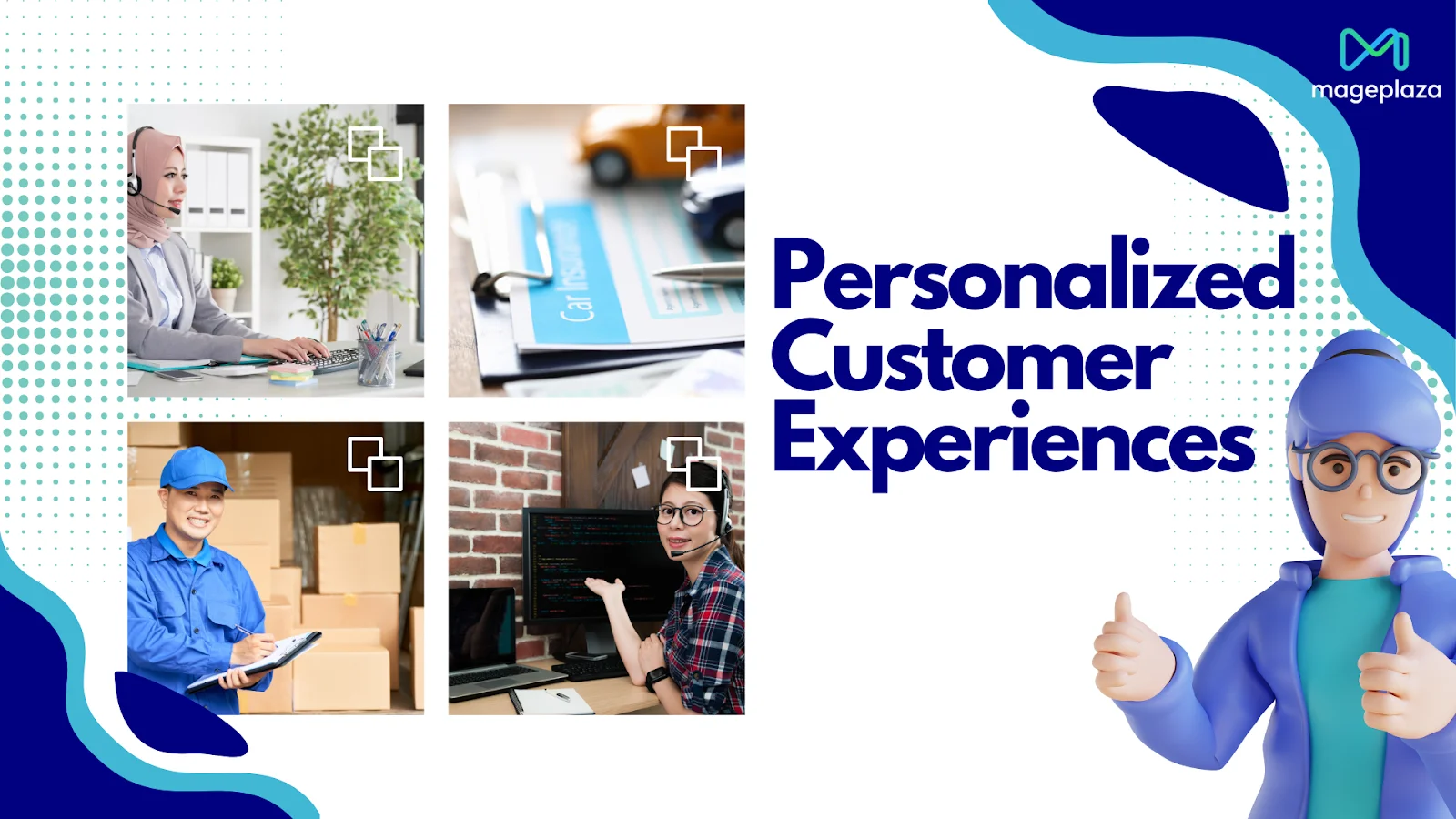
For example, you may create workflows that, in response to certain consumer behaviors, initiate certain activities. These actions might include delivering a discount voucher to a customer who left their basket empty or providing supplementary items after a purchase. This kind of customization may greatly improve customer experience, generating positive feedback and loyalty.
4. Enhanced Segmentation
One of the standout features of ActiveCampaign is its robust segmentation capabilities. You can build comprehensive customer groups based on a variety of criteria, including engagement levels, browsing habits, and past purchases, when your website is linked with Shopify.
This makes it possible for you to communicate with certain groups in a targeted manner, which raises the relevance and potency of your efforts. For example, you could target high-spending customers with exclusive offers or re-engage inactive subscribers with a special promotion, driving higher engagement and conversion rates.
5. Improved Sales and ROI
You can optimize your marketing efforts with the combined strength of Shopify and ActiveCampaign, which will improve sales and return on investment (ROI). By leveraging automation, data synchronization, personalized customer journeys, and advanced segmentation, you can create highly effective marketing campaigns that resonate with your audience.
This integration helps you optimize your marketing strategy, making it easier to track performance, identify successful tactics, and continuously refine your approach for greater profitability.
Connect Your Shopify Store To ActiveCampaign Account: 7 Quick Steps
Connecting your Shopify store to ActiveCampaign is a straightforward process that allows you to automate your marketing and better manage customer data. Here’s a detailed guide on how to set up this integration:
Step 1: Log in to Your ActiveCampaign Account
Start by ogging into your ActiveCampaign account at here.
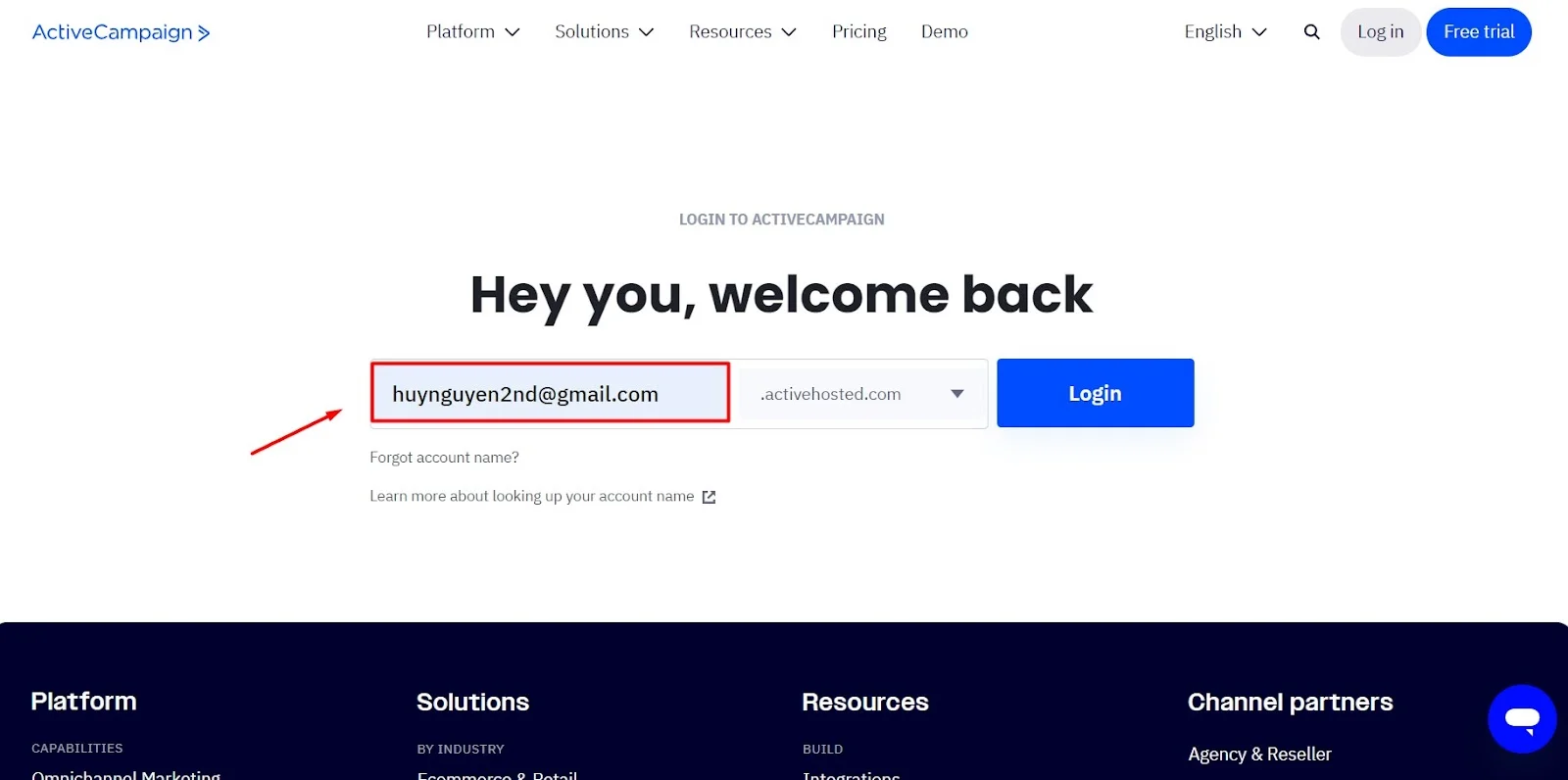
Once you’re logged in, navigate to the Settings > Integrations. This is where you’ll manage all connected apps and integrations.
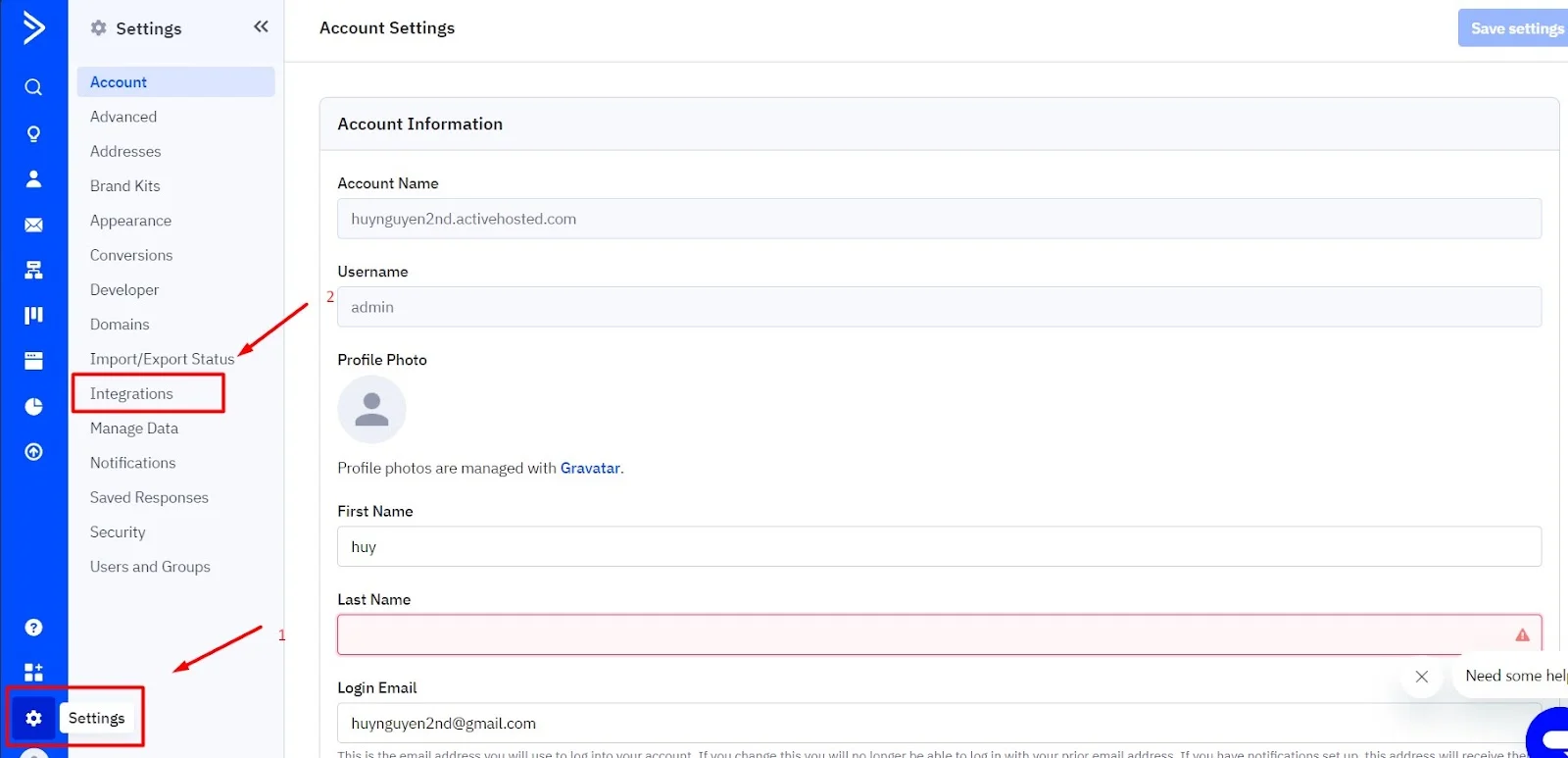
Step 2: Access the Connected Integrations Page
On the “Connected Integrations” page, you’ll see a list of any existing integrations you may have. To add a new one, click the Add Integration button at the top right of the screen. This will open a new modal window where you can choose which app to connect.
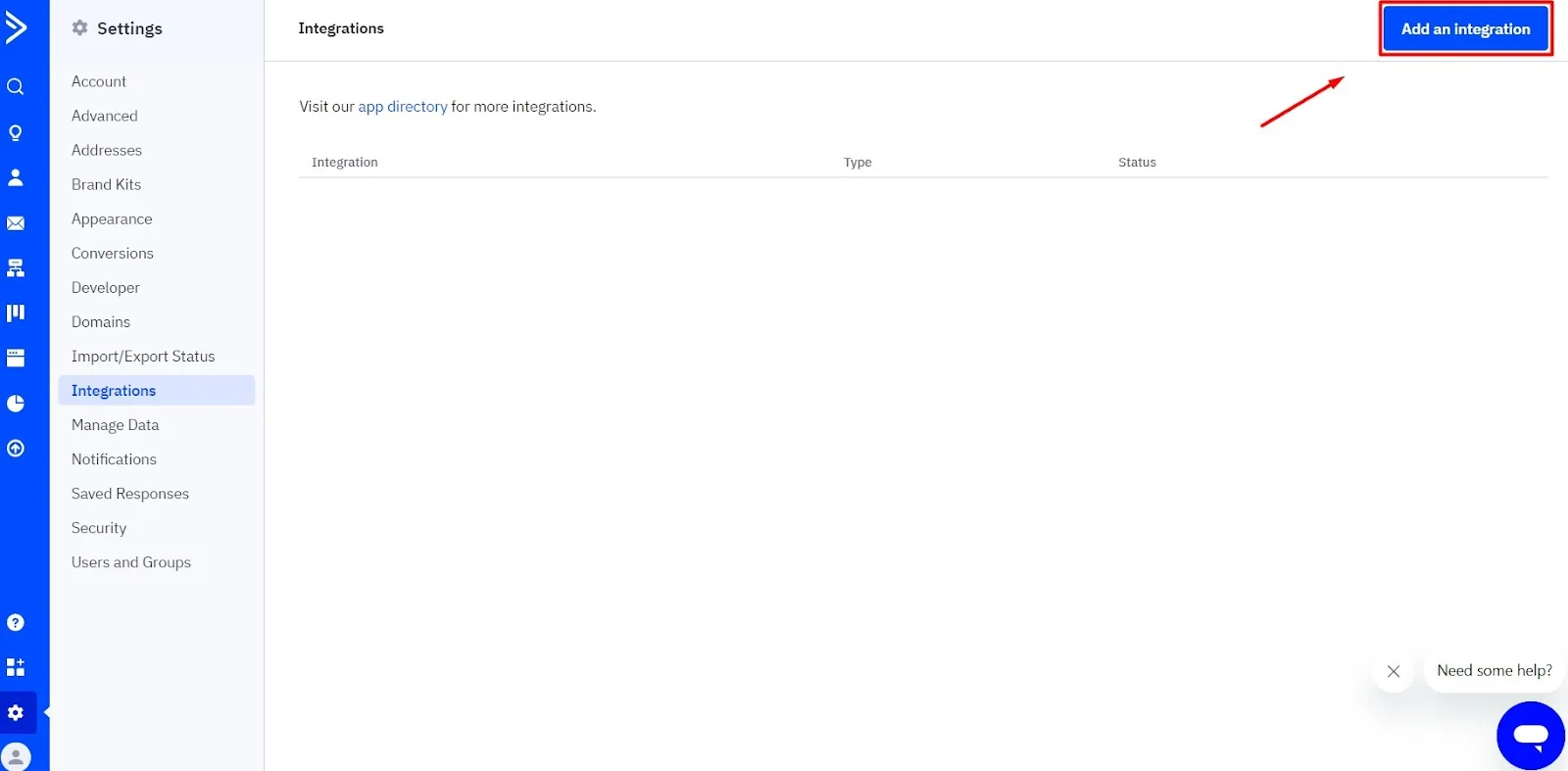
Step 3: Select Shopify as Your Integration
You will see a list of applications that can be connected with ActiveCampaign in the modal window. Scroll down until you find Shopify or use the search bar at the top to quickly locate it. Click on the Shopify option to proceed.
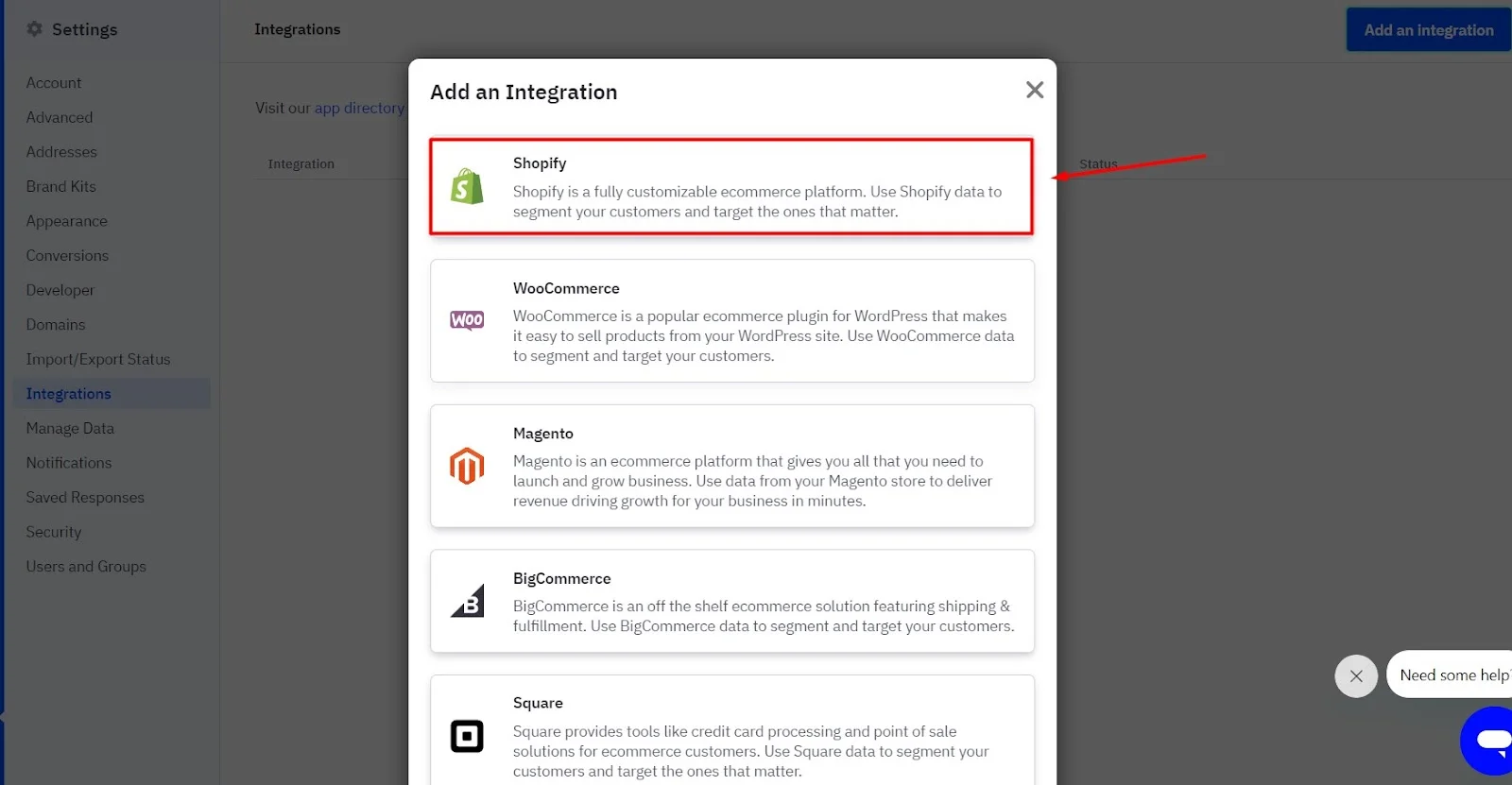
Step 4: Enter Your Shopify Store Name
A new Shopify Integration modal will appear. Here, you’ll need to enter the name of your Shopify store in the field provided. Make sure to enter the exact store name as it appears in your Shopify account. Once you’ve done this, click the Connect button.
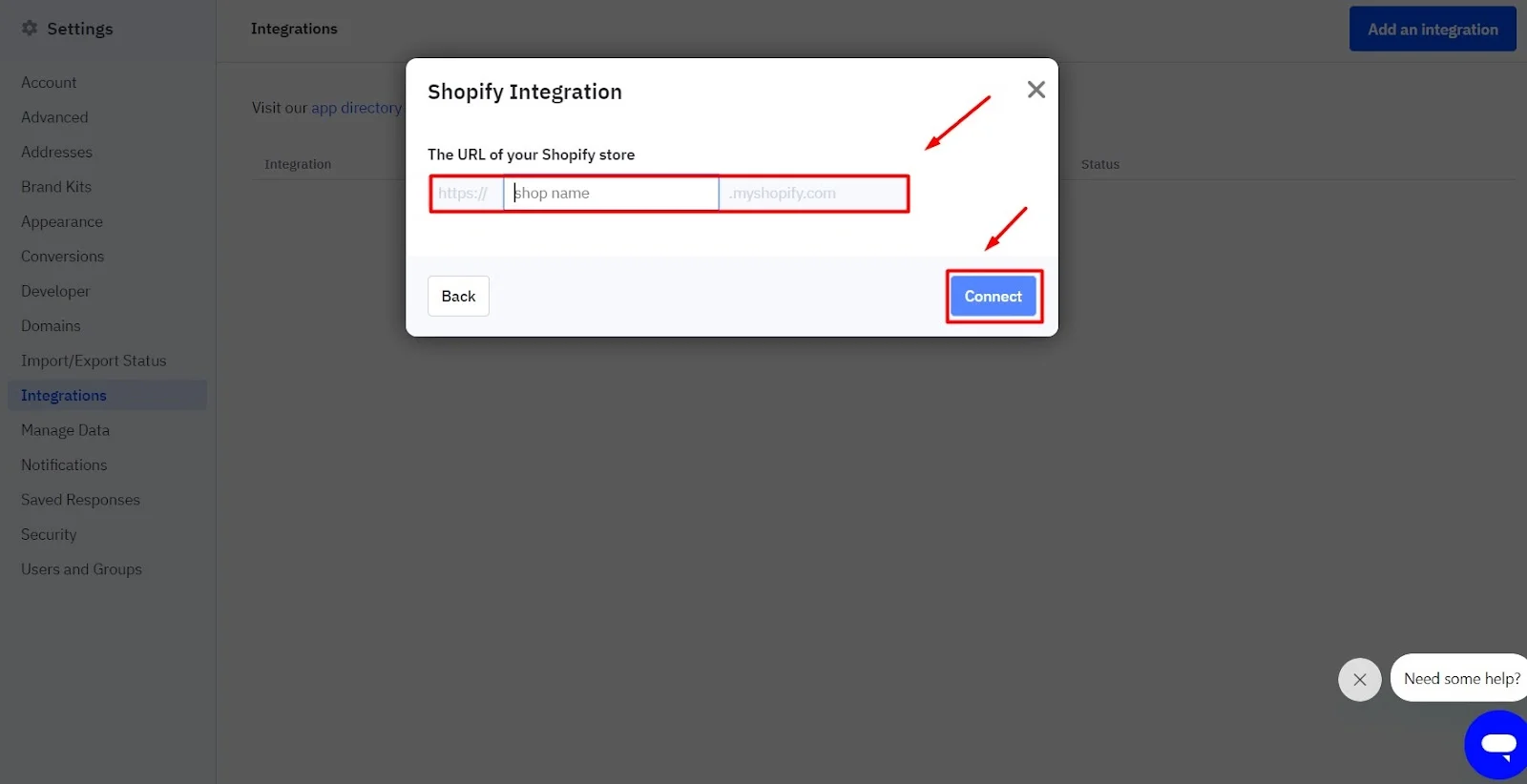
Step 5: Log in to Your Shopify Account
Your browser will open a new tab and direct you to the Shopify login page when you click “connect.” Enter your Shopify credentials and log in. This step is crucial as it verifies that you have the necessary permissions to install apps on your store.
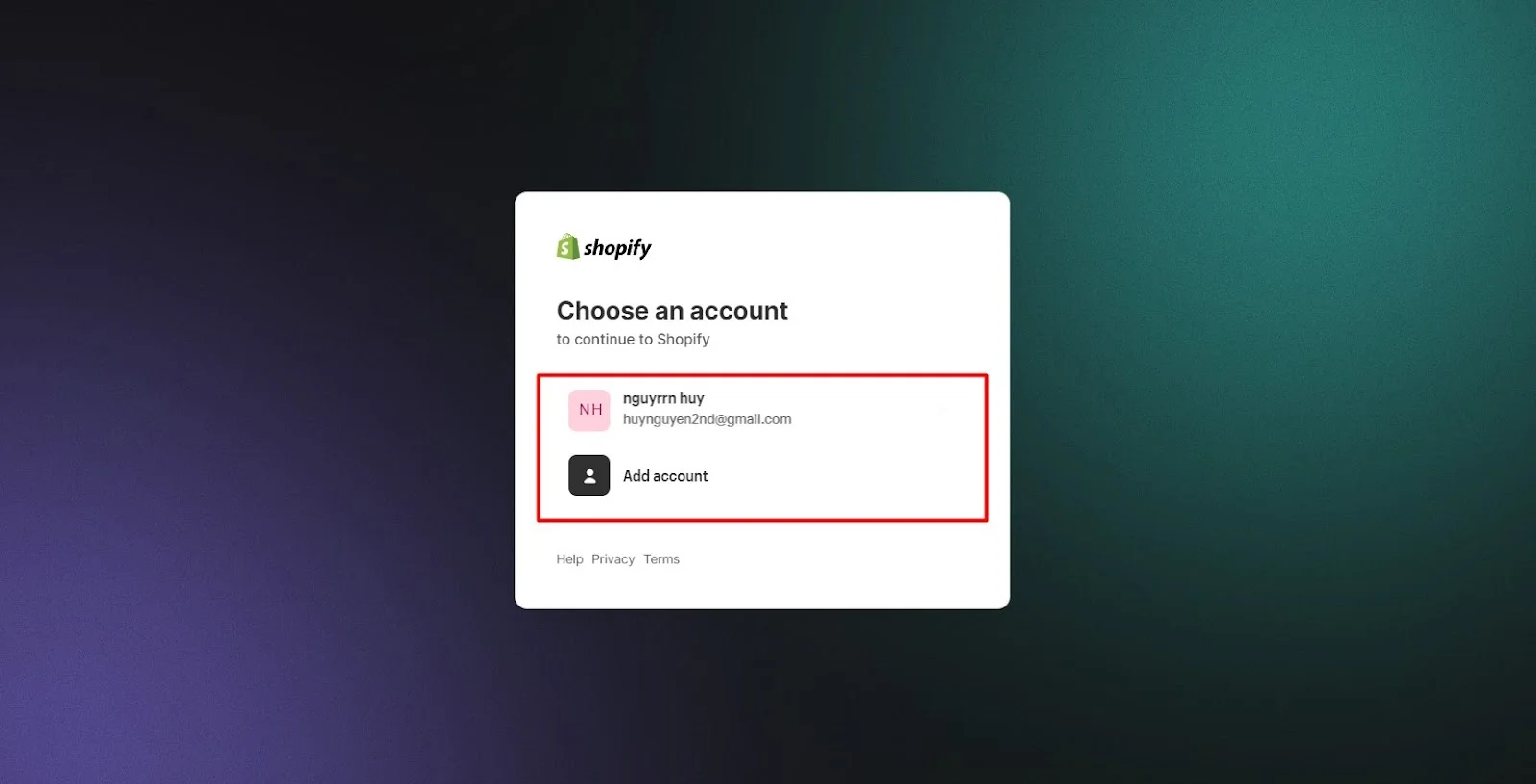
Step 6: Install ActiveCampaign CX Automation
Once logged in, you’ll be directed to a page within Shopify titled “You are about to install ActiveCampaign CX Automation.” This page outlines what the app will do once installed. Review the information and, when ready, on the website, choose the Install app option located at the bottom. Your ActiveCampaign account will be connected to your Shopify shop via this activity.
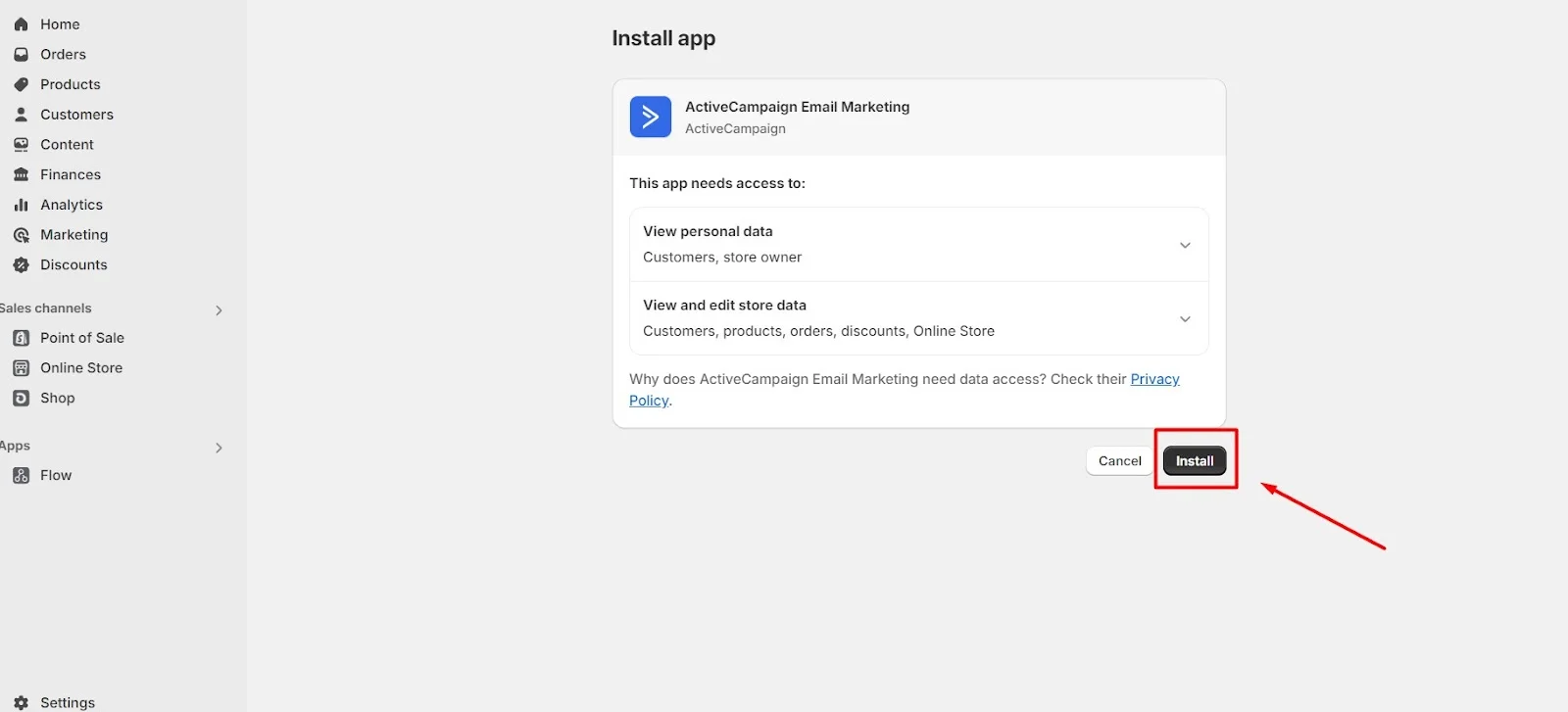
Step 7: Confirm the Connection
After the installation is complete, you’ll be redirected back to your ActiveCampaign account. A confirmation modal will appear, indicating that the integration was successful. Click the Done button to finalize the setup. You can now see that your Shopify store has a Connected status on the Settings > Integrations page.
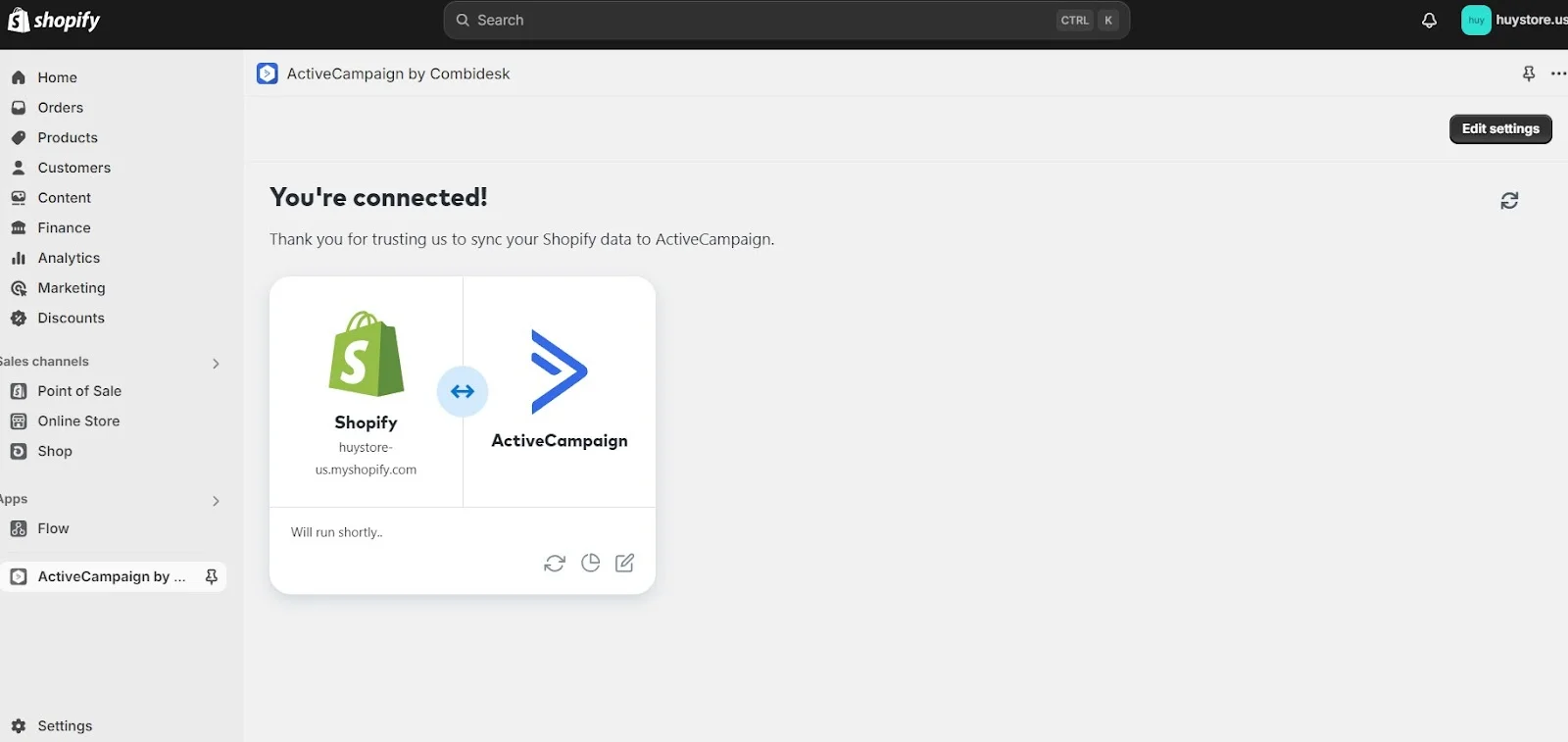
Your Shopify store is now successfully connected to ActiveCampaign. With this connection, you’ll be able to use your ActiveCampaign dashboard to develop customized marketing campaigns, monitor purchases, and automatically sync customer data.
FAQs: Connecting Your Shopify Store to ActiveCampaign
1. Can I sync my existing Shopify customers to ActiveCampaign?
Yes, once you connect your Shopify store to ActiveCampaign, all your existing customer data, including contact details, order history, and behavioral information, will automatically sync. This allows you to segment your audience, set up automated workflows, and send targeted communications without manually importing data.
2. Is there a cost associated with integrating Shopify and ActiveCampaign?
The integration itself is free, but you need to have an active subscription to both Shopify and ActiveCampaign. Depending on your plan, some advanced features may only be available on higher-tier subscriptions. It’s recommended to check both platforms’ pricing pages to understand the costs associated with the features you intend to use.
3. How do I troubleshoot issues if my Shopify store isn’t connecting to ActiveCampaign?
Before you try to connect Shopify and ActiveCampaign, verify that you’ve done everything the right way during the setup process. Ensure that the information you put in for your Shopify store is correct and that you have the right access.
If the problems don’t disappear, you can get help from the ActiveCampaign support center or call their customer service. You could also look over your Shopify settings and connection logs to see if there are any things that could be improved.
Conclusion
When ActiveCampaign and Shopify integrate, you get the best of both far: easy-to-use e-commerce and smart marketing automation. The end result is a better ability to use customer data to have more useful relationships with customers who bring in money. Transactional letters, marketing strategies, and tracking of customer behavior have all been greatly improved. This means that online shops can offer better value to customers and grow at the same time.
Using this synergy in your e-commerce plan could be the push your company needs to improve its digital marketing, build stronger relationships with customers, and drive steady sales growth.







